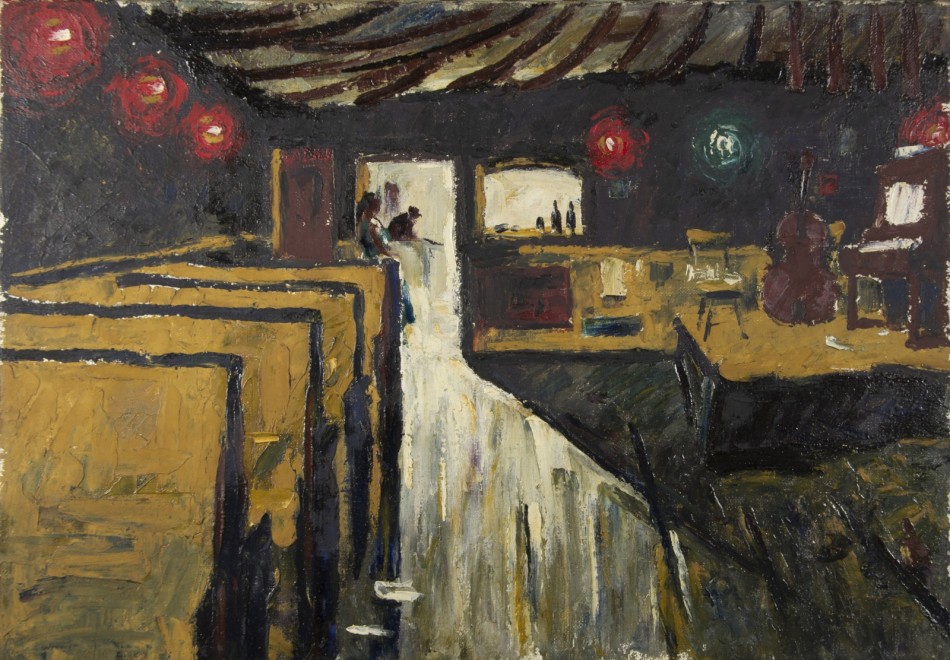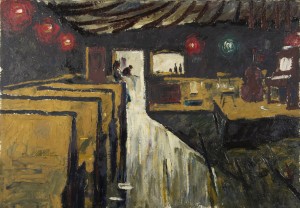
Clyfford Still, PH-418, 1936. Oil on canvas, 21 ¾ x 30 ¼ in. © Clyfford Still Estate
Vincent Van Gogh and Clyfford Still – Painterly Reinventions Explored in Denver
David Anfam has spent 40 years of his life studying Clyfford Still. On September 14, he gave a lecture at the Denver Art Museum about an exhibition that opened that same day at the Clyfford Still Museum—“Vincent/Clyfford.” The exhibit explores threads between the work of Still and Vincent Van Gogh. (DAM is opening a Denver only exhibition “Becoming Van Gogh,” which highlights 90 artworks that illustrate key developments in in Van Gogh’s oeuvre this month.)
Vincent/Clyfford seems like a stretch. A contrived only-in-Denver sort of idea, to promote the new Clyfford Still Museum which sits in the literal shadow of the Libeskind-designed Hamilton Wing at DAM. However, after listening to Anfam’s talk, I was convinced it was more than a manufactured concept to capitalize on what DAM predicts will be a blockbuster exhibit. (Though I still think the idea of stretching the mandate that no other artist’s work be shown in the Clyfford Still Museum by showing the threads between Still and Van Gogh in images accessible via iPad, rather than physical Van Gogh paintings sharing the galleries, doesn’t work.) Read what Judith Dobrzynski had to say about that idea here.
Anfam confessed that the first artist whose work he loved was Van Gogh. He didn’t see his first Still until 1972 at the Tate Modern. In his presentation, which included slide pairs side-by-side, the threads became obvious.
A 1921 book about Van Gogh was translated into English and made available in 1926. The film “Lust for Life” by Irving Stone debuted in 1934 and in 1935 MOMA hosted a Van Gogh exhibition. The Van Gogh catalogue raisonne (the published documentation of all the artist’s works deemed authentic) came out in the mid-1930s. The drawings and sketches found in Still’s body of work are typical of what artist’s of Still’s generation did as part of their art education—drawing and sketching hands, chickens, skulls, in the manner earlier artists drew and sketched them. It’s no secret that Still was influenced by Cezanne (about whom he wrote his Master’s Thesis), but Anfam shared a drawing of a skull done in 1930 by Still that was similar to a drawing done by Van Gogh in 1887—each drawing sharing the position of the skull, the shadows, the flourish of a pencil. And though most know Still as an abstract expressionist, his abstractions grew out of early figurative work.
The bigger link that Anfam made between these two artists is more a spiritual one than a visual one. Both Van Gogh and Still were interested in agrarian life (farming and animals). Anfam shared drawings of chickens and horses and pigs with such obvious similarities between the two artists that it appears one might have been sketching from the other’s work. But when he shared the similarities between Van Gogh and Still when it came to portraying the toil of human workers he had moved me from skeptic to believer.
Still said that his paintings were of the earthly, the damned and the recreated, which Anfam suggests is key to the whole of Still’s outlook. Both Van Gogh and Still saw themselves as spiritual wayfarers, Anfam said. They both believed that life were a spiritual journey and a quest and they wanted their art to reflect that quest. Life. Death. Resurrection. The cycle continues. This culminates for Anfam in the idea of wheat, a subject painted by Van Gogh, but also a major theme running through Still’s imagery as well. Wheat is sown, grown and reaped and these ideas are symbolic of the stages of life.
Both artists emphasized the dug earth, manual labor, potatoes and rocks. They focused on the challenges of human existence, evidenced in Still’s early primitive figures and Van Gogh’s early works like The Potato Eaters, in contrast to the over-refined style of academic or salon painting (particularly in Van Gogh’s case).
Anfam calls the visual connections not Van Gogh influencing Still, but Still reimagining Van Gogh and Cezanne.
“It’s not about paint color. It’s about a moral struggle. It’s about ethics.” Anfam said, adding that Still’s tirades against the art establishment was not that different from Van Gogh’s. “Artists can go to the dogs. I’m risking my life for it,” he wrote to his brother Theo.
And there is a remarkable parity in the way both painters used color, applying paint to canvas kinetically.
Anfam draws his conclusion by providing the strongest link between the 19th-century Dutch artist and the 20th century American artist via the French philosopher Antonin Artaud. The American artist Jess, a student of Still’s in San Francisco, has recalled Still speaking passionately about Artaud and his Van Gogh text. Artaud made his life a work of art. He wanted to get to a new understanding of reality and saw Van Gogh as a man suicided by society.
Van Gogh and Still shared a commitment to art as a kind of religious faith and themselves as the ultimate outsiders. But visitors to the Clyfford Still Museum don’t get the privilege of listening to Anfam’s lecture, instead they must read wall text and flip through images on iPads. If they indeed do so, the reimagining of Van Gogh by Still will seem more real and less like a cross-promotional opportunity.



